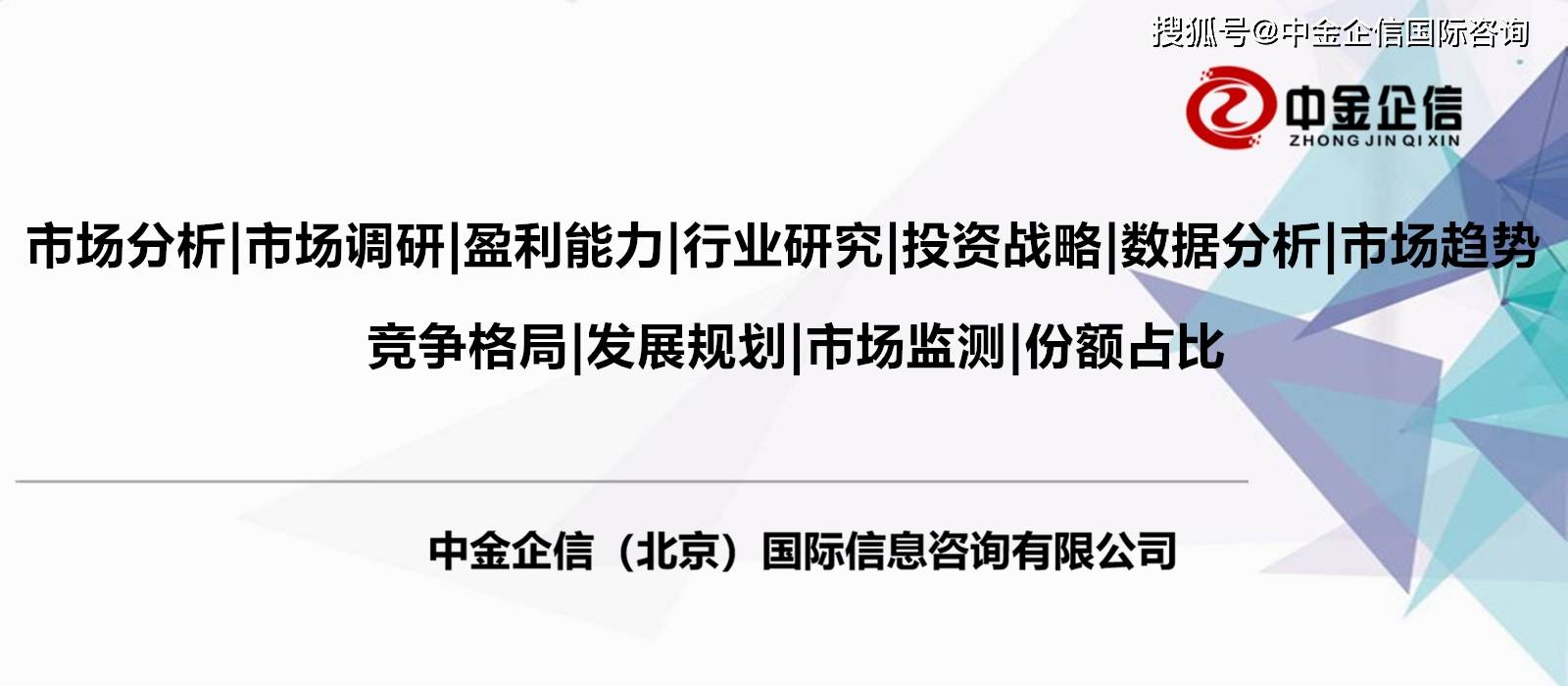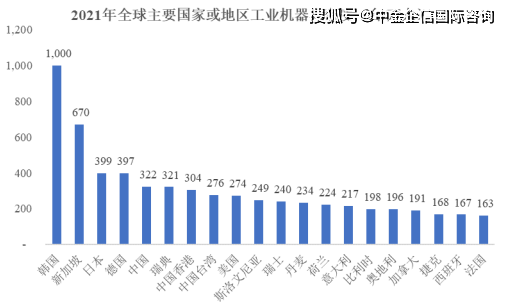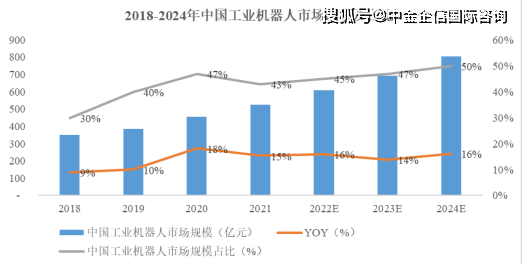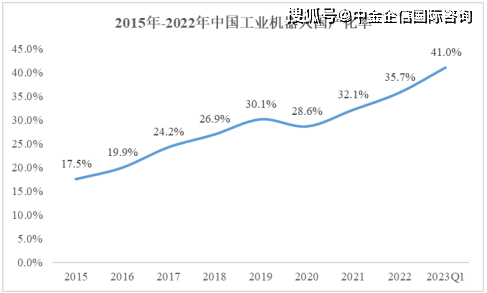 Technology peripherals
Technology peripherals
 AI
AI
 Industrial robot market analysis and development trend forecast in 2024
Industrial robot market analysis and development trend forecast in 2024
Industrial robot market analysis and development trend forecast in 2024
2024 Industrial Robot Industry Application Field Market Analysis and Industry Development Trend Forecast

Report publisher: CICC Enterprises International Consulting "2024-2030 Industrial Robot Industry Market Research and Strategic Planning Investment Forecast Report"
Recommended reports related to CICC International Consulting (2023-2024)
"Industrial Robot Project Proposal-Prepared by CICC Enterprise Credit"
"Single Champion Market Share-Industrial Robot Market Share Certification Report (2024 Edition)"
"CICC Enterprises Released - "In-depth Survey on Market Development of Industrial Robot Industry and Investment Strategy Feasibility Report (2023 Edition)"
"2023-2029 China Industrial Robot Special Lubricant/Grease Market Development Analysis and Future Investment Potential Feasibility Report"
"2023-2028 Industrial Robot Line Market Development Pattern Analysis and Investment Scale Feasibility Assessment Forecast Report"
(1) Overview of the development of the industrial robot industry
① The aging of the population has led to an increase in labor costs, and it is a general trend that machines will replace people
Since 2013, my country’s population ratio between the ages of 20 and 59 has reached an inflection point, and the long-term demographic dividend period has come to an end. After 2012, the growth rate of employee wages began to exceed the growth rate of corporate income, and labor costs increased significantly. As the demographic dividend weakens, the gap between rising labor costs and falling equipment costs further expands. Considering the safety of workers' operations, machine substitution is more cost-effective in some specific fields. At present, the density of industrial robots in my country's manufacturing industry is still lower than that of developed countries such as Europe, South Korea, and Japan. According to statistics, the density of industrial robots in my country's manufacturing industry in 2021 is 322 units per 10,000 people, while the density of industrial robots in South Korea, Japan, and Germany during the same period was 1,000 units each. /10,000 people, 399 units/10,000 people, and 397 units/10,000 people. my country’s robot density is lower than that of developed countries such as Europe, South Korea, and Japan, and there is still room for further improvement.

Data compilation: CICC International Consulting
②China is the world’s largest market for industrial robots
In 2022, my country's industrial robot market size will be 60.9 billion yuan, accounting for 45% of the global industrial robot market size. Industrial robots have been widely used in industries such as automobiles, electronics, metal products, plastics and chemical products. The epidemic has accelerated the digital transformation of various industries, and robots have become an important tool for enterprises to resume work and production. According to data, after two consecutive years of downturn in 2019-2020, the global industrial robot market rebounded strongly to 122.5 billion yuan in 2021, a year-on-year increase of 26%. As a global manufacturing center, China's demand for industrial robots continues to expand. In 2022, my country's industrial robot market size will be approximately 60.9 billion yuan, accounting for 45% of the global industrial robot market size. Complete sets of industrial robot automated production line equipment have become the mainstream of automation equipment and the future development direction. It is expected that the global and Chinese industrial robot market sizes will have a compound annual growth rate of 9.5% and 15.3% respectively from 2021 to 2024.

Data compilation: CICC International Consulting
③Industrial robots occupy half of the robot market
According to different application fields, robots can be divided into industrial robots, service robots, special robots and other robots. In 2021, China's robot market will reach 99.4 billion yuan, of which industrial robots will be 52.5 billion yuan, accounting for 53%, which is much higher than service robots and special robots. According to different uses, industrial robots can be divided into handling/loading and unloading robots, welding robots, spraying robots, processing robots, assembly robots, cleaning robots and other industrial robots.
(2) Development Trend of Industrial Robot Industry
1) Policy dividends promote doubling of the density of manufacturing robots
With the comprehensive implementation of "Made in China 2025" in the country, intelligent manufacturing has been listed as the main direction to promote the integrated development of new generation information technology and manufacturing technology, and is also an important position for industrial innovation. In order to regulate and support my country's robot industry, the central and local governments have successively introduced various policies. In recent years, the country has paid more and more attention to the robot industry. In 2022, with the implementation of the five safeguard measures in the "Robot Industry Development Plan", the development of the robot industry will enter a new stage, ushering in new opportunities, new goals and new challenges. In January 2023, 17 departments including the Ministry of Industry and Information Technology released the "Robot Application Action Implementation Plan", which set the goal of doubling the density of robots in my country's manufacturing industry by 2025 compared with 2020. In 2021, the density of industrial robots in China is 322 units/ten thousand people, and according to the target, it will reach about 500 units/ten thousand people in 2025. The penetration rate CAGR from 2021 to 2025 is 12%.
2) The trend of localization of industrial robots is obviously accelerating
The four overseas giants that have long held a monopoly in the field of industrial robots are Japan's Fanuc and Yaskawa Electric, as well as Switzerland's ABB and Germany's KUKA. Data shows that the localization rate of industrial robots in 2015 was only 17.5%. Around 2016, my country entered the stage of industrial upgrading. Industrial robots were a key area of intelligent equipment. The comprehensiveness of policies during this period was significantly enhanced. The government has promoted localization and intelligence of industries through many measures such as setting industry standards, optimizing the business environment, and establishing innovation centers. In 2022, the localization rate of my country's industrial robots has increased to 35.7%. Among them, Fanuc, ABB, Yaskawa, and KUKA have sold 43,000 units, 23,000 units, 23,000 units, and 22,000 units in China respectively, with a market share of 15%, 8%, 8%, 8%. During the same period, the sales market share of my country's industrial robot leaders Eston and Inovance Technology's robots increased to 6% and 5%. In 2023, the localization rate of industrial robots will reach 41%, a year-on-year increase of 9%, and the trend of localization is obviously accelerating.

Data compilation: CICC International Consulting
3) The broadening of application scenarios has improved the industry development space
With the advancement of robot technology and the improvement of economy, its application in general industries with short life cycles such as electronics, metal manufacturing, food and beverages, and plastic products has also become increasingly popular, and the development trend of horizontally broadening the downstream application fields Gradually it became clear. Data shows that the sales proportion of robots used in non-automotive industries in my country increased from 68% to 74% from 2019 to 2022. Among them, the lithium battery and photovoltaic industries developed the fastest. The compound sales growth rates from 2019 to 2022 were 60% and 51% respectively. %. In contrast, the compound growth rate of automotive robot sales is only 16%. The expansion of application scenarios in electronics, metal manufacturing, food and beverages, plastic products, lithium batteries, photovoltaics, etc. provides broader space for the development of the industrial robot industry. .
The above is the detailed content of Industrial robot market analysis and development trend forecast in 2024. For more information, please follow other related articles on the PHP Chinese website!

Hot AI Tools

Undresser.AI Undress
AI-powered app for creating realistic nude photos

AI Clothes Remover
Online AI tool for removing clothes from photos.

Undress AI Tool
Undress images for free

Clothoff.io
AI clothes remover

AI Hentai Generator
Generate AI Hentai for free.

Hot Article

Hot Tools

Notepad++7.3.1
Easy-to-use and free code editor

SublimeText3 Chinese version
Chinese version, very easy to use

Zend Studio 13.0.1
Powerful PHP integrated development environment

Dreamweaver CS6
Visual web development tools

SublimeText3 Mac version
God-level code editing software (SublimeText3)

Hot Topics
 Industrial robot market analysis and development trend forecast in 2024
Jan 18, 2024 am 11:27 AM
Industrial robot market analysis and development trend forecast in 2024
Jan 18, 2024 am 11:27 AM
2024 Industrial Robot Industry Application Field Market Analysis and Industry Development Trend Forecast Report Publisher: CICC Enterprise Trust International Consulting "2024-2030 Industrial Robot Industry Market Research and Strategic Planning Investment Forecast Report" CICC Enterprise Trust International Consulting related report recommendations (2023-2024 ) "Industrial Robot Project Proposal - Prepared by CICC Enterprises" "Individual Champion Market Share - Industrial Robot Market Share Certification Report (2024 Edition)" "Released by CICC Enterprises - "In-depth Investigation into the Market Development of the Industrial Robot Industry and Investment Strategy Feasibility Report (2023 Edition)》《2023-2029 China's Industrial Robot Special Lubricants/Grease Market Development Analysis and Future Investment Potential Feasibility Report》《2023-202
 Comprehensive comparison and business layout summary of listed companies in the industrial robot industry in 2023
Aug 17, 2023 pm 11:41 PM
Comprehensive comparison and business layout summary of listed companies in the industrial robot industry in 2023
Aug 17, 2023 pm 11:41 PM
——Rewrite the title: Comprehensive comparison of listed companies in the industrial robot industry in 2023: Comprehensive comparison of major listed companies in the industry in terms of business layout, performance and business planning: Robot (300024); New Star (002527); Eston (002747) ; Inovance Technology (300124); Evert (688165), etc. The core data of this article: summary of listed companies; business layout of listed companies; performance of listed companies; business planning of listed companies 1. Summarizes the situation of listed companies in the industrial robot industry Industrial Robots The core components of the industry, such as robot control systems, reducers and servo systems, play an important role in the cost structure of industrial robots. Midstream robot manufacturing companies typically engage in vertical integration to
 Current status analysis and forecast of Python technology job market
Sep 09, 2023 pm 09:09 PM
Current status analysis and forecast of Python technology job market
Sep 09, 2023 pm 09:09 PM
Analysis and Forecast of the Current Situation of the Python Technical Job Market With the rapid development of information technology, the Python programming language has achieved rapid development in the technical job market in recent years. Python's concise and easy-to-read syntax, huge community support, and wide range of application fields have made it the first choice for many companies and developers. This article will analyze the current situation of the Python technology job market and predict future development trends. 1. Current status of Python technology job market Popularity of Python technology Pytho
 Kunbo Seiko: Produces industrial robot arms and develops new growth curves for semiconductors
Nov 22, 2023 pm 05:43 PM
Kunbo Seiko: Produces industrial robot arms and develops new growth curves for semiconductors
Nov 22, 2023 pm 05:43 PM
Kunbo Seiko will be launched on the 23rd. The company has two underexplored highlights, one is industrial robot arms, and the other is semiconductor concept. Kunbo Precision produces industrial robot arms and other industrial automation equipment parts. Kunbo Precision high-end equipment precision molding parts products are based on applications. The fields can be divided into four series: wind turbines, industrial automation equipment, offshore engineering equipment, and semiconductor processing equipment. Wind turbine parts include wind power gear box seats, spindle bearing seats, etc.; industrial automation equipment parts include electric precision injection molding machine templates, oil cylinders, industrial robot arms, swivel seats and other main joint parts; offshore engineering equipment parts include seawater Desalination valves, offshore oil coating and cutting device components; semiconductor processing equipment components including grinding and polishing discs, cutting fuselage components
 Limitations of industrial robots
Apr 12, 2023 pm 01:55 PM
Limitations of industrial robots
Apr 12, 2023 pm 01:55 PM
Today, industrial robots are used in almost all industries. They bring many benefits to manufacturing facilities and pave the way for the smart factories of the future. However, there are some limitations that manufacturers should consider when selecting robotic equipment. Demand for automated processes is increasing, with the industrial robot market expected to reach $31.3 billion by 2028, Fortune Business Insights reports. Manufacturers are increasingly aware of the potential business and production benefits of implementing robots. However, industrial robots are not without their drawbacks. Here are some of the most common limitations, along with some suggestions from manufacturers on how to overcome them. Affordability Generally speaking, industrial robots require a significant upfront investment, including additional installation and configuration costs. Manufacturers also need to consider future maintenance costs and
 What are the advantages of industrial robots for welding?
Apr 08, 2023 pm 02:01 PM
What are the advantages of industrial robots for welding?
Apr 08, 2023 pm 02:01 PM
How do industrial welding robots help users improve welding efficiency? Industrial welding robots are automated mechanical equipment used for welding operations. Traditional welding has problems such as difficult welding processes, low efficiency, difficulty in recruiting workers, and unstable welding quality. Industrial welding robot applications help users solve problems and use industrial welding robots to put into production. This article takes you through the advantages of industrial welding robots. 1. Intelligent welding control system Industrial welding robots have multiple sensors. The arc sensor can automatically find the position. The arc sensor uploads the welding information to the control system. The control system can release just the right welding material for filler welding according to the programming parameters. seams, reducing the repair rate of welded parts and improving welding efficiency. 2. Multi-axis cooperation improves welding flexibility and industrial welding
 Configure Linux systems to support industrial robots and automated production development
Jul 04, 2023 pm 12:01 PM
Configure Linux systems to support industrial robots and automated production development
Jul 04, 2023 pm 12:01 PM
Configuring Linux systems to support industrial robots and automated production development With the rapid development of industrial robots and automated production, more and more companies are beginning to use Linux systems to support their production development. Linux system has good stability, flexibility and customizability, which makes it an ideal choice. This article will describe how to configure a Linux system to support industrial robots and automated production development, and provide some code examples. To install a Linux system, first, you need to choose a suitable Linux
 What systems does an industrial robot consist of? What is the role of each?
Apr 08, 2023 pm 02:51 PM
What systems does an industrial robot consist of? What is the role of each?
Apr 08, 2023 pm 02:51 PM
A robot is a machine that has more degrees of freedom in three-dimensional space and can realize many anthropomorphic actions and functions, while industrial robots are robots used in industrial production. Its characteristics are: programmability, anthropomorphism, versatility, and mechatronics. What systems does an industrial robot consist of? 1. The main body of the machine is the machine base and the actuator, including the big arm, forearm, wrist and hand, which constitute a multi-degree-of-freedom mechanical system. Some robots also have walking mechanisms. Industrial robots have 6 degrees of freedom or even more. The wrist generally has 1 to 3 degrees of freedom of movement. 2. The drive system is a transmission device that enables the robot to run. According to the power source, it is divided into three categories: hydraulic, pneumatic and electric. These three types can also be combined into a composite drive system based on requirements. or via timing belt





